| Cover Story
Fair Factor
"The Whiter the Better"
Kajalie Shehreen Islam, Hana Shams Ahmed, Elita Karim and Aasha Mehreen Amin
 It may seem a strange phenomenon that in a country where the majority of the people are dark-skinned with subtle variations in brownness, the overriding factor that declares whether a woman is good-looking or not is the lightness of her skin. Would-be mothers-in-law crave for fair-skinned brides for their sons; men young and old, prefer lighter-skinned partners (if they have a choice) and most pathetically of all, women from all socio-economic backgrounds go to unbelievable lengths to become just a little whiter. It may seem a strange phenomenon that in a country where the majority of the people are dark-skinned with subtle variations in brownness, the overriding factor that declares whether a woman is good-looking or not is the lightness of her skin. Would-be mothers-in-law crave for fair-skinned brides for their sons; men young and old, prefer lighter-skinned partners (if they have a choice) and most pathetically of all, women from all socio-economic backgrounds go to unbelievable lengths to become just a little whiter.
Even our jargon gives evidence of this prejudice. Dark-skinned people are described as being 'moyla' which literally means dirty and a person who is described as 'shundor' (beautiful or good-looking) is someone who has fair skin. Mothers become anxious when their baby girls turn out to be dark as this puts their daughters at a disadvantage in the "marriage market". Many young women go through the humiliation of being checked out by the prospective groom and his reltives, only to be rejected because her skin is not fair enough. Others pay higher dowries or have some other lucrative incentive (like property or fat bank balances) to make up for their darkness. Even girls as young as 8 or 9 years are conscious about not getting tanned in the sun.
Meanwhile the media especially electronic, seems to be part of this conspiracy. All the women one sees on television from film actresses to presenters to models in beauty ads, everyone is light-skinned. Watching television these days, one would think that there are no dark-skinned women in either India or Bangladesh!
The obsession with whiter skin has opened up great opportunities for skin cream manufacturers and the market is ridden with all kinds of creams, lotions and gels that guarantee fairer skin after regular use. Women- those who can afford it that is- spend thousands of takas on these products as well as treatments at salons just to lighten their skin. Sunshine was never such a fearsome thing.
The fascination with fair skin may be rooted in a number of things. One, dark skin is associated with labour and field work in the sun, and fair skin with wealth, aristocracy and higher education. A second theory is that light-skinned conquerors from the Aryans to the Moghuls and European colonisers set the standard for attractiveness in the poorer colonies with their dark-skinned majority.
Whatever the roots, in modern times, the fairness fixation has been reinforced and perpetuated by the media. Every face on the billboard and silver screen, excepting some of the rare "dusky" beauties and villains and vamps, appears to be light-skinned. Fairness is equated with beauty. But while this is done more implicitly in films, etc., it is blatantly explicit in advertisements for fairness creams.
Fairness product ads started with slogans like "Auporup ruper jonno" (for breath-taking beauty). They focused on attaining fairness by blocking out the sun with sunscreen-like fairness lotion which also reduced melanin in the skin. Soon they began to focus on the results. It started out with catching a good husband. Several ads were about men not noticing, women who were dark. Once the women became fair, however, it was love at first sight and almost instantaneous marriage. A beautiful voice or even a beautiful face could not fix the gaze of the man unless the woman was fair. One advertisement even equated fairness with love: "Shottikarer phorsha, ujjol tauk . . . shottikarer bhalobasha" (truly fair, bright skin . . . true love).
In the mid- and late 1990s, fairness product ads, while still maintaining the husband-catching function, also began to focus on things like self-confidence, success and prosperity -- all, of course, brought on by fairness. Women were shown walking up the steps of the "path to self-confidence", their "beauty opening doors to prosperity" and so on.
A particularly controversial ad (in that it was taken off the air in neighbouring India after much protest, though it was a huge advertising success) was multinational company Unilever's Fair and Lovely's "airhostess ad". This ad shows a father unable to afford tea with all its condiments on his sole pension. He sighs, longing for a "support" (in the Indian version he actually longed for a son). His dark-skinned daughter, realising her inferiority and incapacity in providing this, becomes determined to land a job as an airhostess and does so thanks to generous slatherings of the fairness cream and is then able to take her father to a posh hotel for coffee.
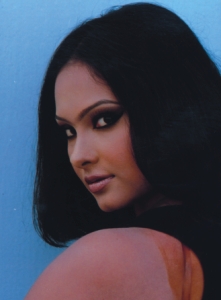 The dusky-skinned beauty is yet to get widespread recognition in our society |
Another ad shows a girl who dreams of being a cricket commentator. Her make-believe microphone is replaced by someone in the family with a tube of fairness lotion and she is next seen at the cricket stadium, commentating, all eyes and the video screens focused on her. Yet another ad shows a young girl being chosen off the street by a well-known film producer to act in his next film -- after she uses a newly-discovered fairness gel.
The very clear messages of these ads are that dark women are ugly and unsuccessful, both in their personal and professional lives. Fair is beautiful, fairness of skin is what ensures love, husbands, good jobs, and coffee at fancy hotels. Simply put, dark women are just not good enough.
Unilever counters this criticism by saying that complexion is one of the Asian standards of beauty and that it is a dimension of personal grooming, for "a well-groomed person usually has an advantage in life". Unilever claims that the source of their ads is the social and cultural context and that their ads connect with the lives and realities of their consumers, which has resulted in their "large set of loyal users and strong brand equity".
But advertisements for fairness products promote the idea that fairness is equivalent to beauty, confidence and control over one's life, with self-confidence and security, love, marriage and career prospects and overall social acceptance depending on the colour of one's skin. For a company that spends 50 crore taka annually on advertising of Fair and Lovely alone, these ads obviously work. But the fact remains that such ads and images perpetuate a negative cultural stereotype, blatantly stating that a woman's beauty is measured by the degree of fairness of their skin. If nothing else, such companies have a social responsibility, corporate social responsibility, to society to not encourage such negative ideas. Unilever's product may be safe in terms of its use but its advertising stance is socially harmful as it reinforces prejudice against the darker skinned.
This problem is widespread in other Asian countries. Samah Sabawi, an Arab writer and activist based in Canada, writes about the obsession with white skin in the Arab world where "music clips and fashion magazines are rife with white models with blond hair who certainly are not reflective of their predominantly olive-skinned audiences." Sabawi quotes Egypt based newspaper Al Ahram which has given this desire to be white a curious label: 'shadism', a colour hierarchy internalised through centuries of white colonial supremacy.
Sabawi argues that this kind of shadism is at work in the Arab world and across Asia and Africa where there is an inherent notion that white races are superior and therefore nations with darker colours and shades are inferior.
The Gender in Media Forum, a group of academicians, journalists, NGO workers, etc., have also expressed concern about the harmful effects -- both physical and social -- of fairness creams in general and Fair and Lovely in particular. According to the forum, it is our consumer right to know what is in the products we buy and use, and, if they are proved to be harmful, their production must be stopped. But because the group is more concerned with the gender and media aspect of it, however, it is more bent on getting ads for fairness creams, or at least such discriminatory ones, off the air. For this they have been chalking up a number of programmes, including creating awareness among and educating people about not only the possibly harmful effects of fairness creams but also of the fairness fixation, and meeting with Unilever itself to persuade them to change their advertisements.
Dermatologists claim that there is no such thing as a fairness cream, certainly not without using skin-bleaching agents such as hydroquinone, steroids, mercury salts, and a number of other ingredients including bismuth subnitrate, hydrogen peroxide, magnesium peroxide and zinc peroxide.
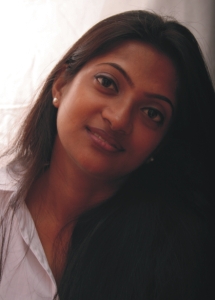 Nothing can beat an alternative, intelligent-looking face |
All of these ingredients, says Prof ABM Faroque, Chair, Department of Pharmaceutical Technology, University of Dhaka, can cause, among more serious health hazards, nephrotoxicity, mercury toxicity and serious allergic reactions. Nephrotoxicity refers to irritation to nephrons in the kidney, causing kidney damage. Mercury toxicity includes effects like metallic taste, increased thirst, abdominal pain, bloody diarrhoea, nephritis, decreased flow of urine, colitis or constipation, tremors, anaemia, and skin problems. Mercury has adverse effects on the developing brain of a foetus.
Fairness cream market leader in Bangladesh, Fair and Lovely, however, claims that it does not use any skin-bleaching agents and neither does its formulation include any harmful ingredients like hydroquinone, steroids or mercury.
According to scientists at Unilever, Fair and Lovely "lightens skin safely and reversibly through a synergistic and patented combination of" Vitamin B3 (niacinamide) and a mixture of US FDA- and EU-approved UV-A and UV-B sunscreens. Ayurvedic Fair and Lovely also contains natural skin-lightening agents such as Kumkumadi Tailum.
Unilever claims that niacinamide topically applied is effective in reducing hyperpigmentation and lightening skin colour and that it is also beneficial in terms of anti-ageing, overall skin texture, etc.
Certain types of sunscreen are also bad for the skin, says the Professor Faroque, and have been known to cause skin cancer. Unilever, however, insists that the two organic sunscreens used in Fair and Lovely, have been cleared by the US FDA and EU, and the amount used is much less than the amount approved.
Unilever adds that the technology used in Fair and Lovely is sold (either as Fair and Lovely itself or as Ponds) in over 35 countries, and has been for the past 30 years to millions of satisfied customers who bear testimonial to the safety and efficacy of their product.
Experts like Prof Faroque say, "We have nothing against Fair and Lovely. We simply want to know what is used in it. It is our right as consumers to know what we are buying and using." The ingredients as stated in Fair and Lovely packages cannot make a person fair, but the advertisements for the creams and lotions, as well as the packages themselves, claim that it is a fairness cream, making people several shades lighter in four to six weeks. Says Professor Faruque "If the manufacturers have invented a formula which brings fairness without the use of such agents, we would be very interested to know about it. Unilever's patent will be protected, but it is their duty to let their consumers know what they are using."
Ironically, despite the obsession with lighter skin, the fact remains that dark skin is less vulnerable to skin diseases than light skin. Dark skin has more melanin, which protects the skin from the sun and, in turn, disease. Light skin contains less melanin and thus less protection. Fairness creams use agents like hydroquinone to kill melanocytes in the skin which produce melanin, thereby making the colour of the skin lighter, but making it susceptible to disease.
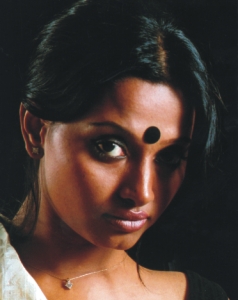 Some women use fairness creams to change their skin colour though they have flawless features and a beautiful face |
While the makers of Fair and Lovely categorically state that their product is safe, there are hundreds of other fairness products around the world, many of them illegally produced, which promise their users fairness but often end up destroying their skin and causing serious diseases like melanoma or skin cancer and kidney problems.
Whitening products now rack up $10 million in sales a year, according to a market research firm Euromonitor. In India, the fairness creams market is estimated at Rs.800 crores.
The obsession with lighter skin is not unique to the South Asian sub-continent. Even in countries like Thailand, Hong Kong, Malaysia, the Philippines, South Korea, Taiwan and even Japan, skin-whitening products abound. The preference for lighter skin has also become a disturbing issue in the Arab world. According to an International Herald Tribune report, a woman in Thailand became disfigured after using an illegally produced fairness lotion she bought at a local grocery store. In December 2000, a doctor from Prince of Wales Hospital in Honk Kong tested 36 creams made by cosmetic companies across the world. The test results found that eight of the creams which came from China and Taiwan, exceeded the U.S. Food and Drug Administration safety limits for mercury.
From a medical point of view, dark skin is healthier, says Prof Faroque. Thus we see that when a couple, with one dark-skinned and one light-skinned partner, have a child, the child will usually inherit the dark skin. This, says Prof Faroque, is simply because nature makes the better choice. It is we who make a wrong choice by preferring to be fairer and glorifying it.
Twenty-nine-year-old Shoma (not her real name) is excited about her forthcoming wedding. Her dark skin, she says, is the main reason why she is getting married so 'late'. Her parents and relatives had been trying to arrange her wedding for nearly 6 years. Now that the big day is finally approaching she says she needs to do everything she possibly can to make her skin fairer.
"I have done fair polish and a facial. On my wedding day of course I hope my beautician will manage to make me look much fairer," says Shoma.
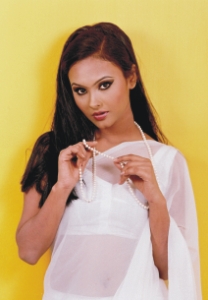 Good bone-structure, flawless skin and good-grooming are true determinants of beauty irrespective of skin colour |
Many women (of all ages) flock the myriads of beauty salons in the country every day aspiring to look more beautiful, an important part of which is having a fairer skin.
Sadia Moyeen, the leading beautician at La Belle agrees that most women consider fair skin to be an asset. "For most people," she says, "the idea of beauty is that you have to be fair first, and the features are secondary."
Farzana Shakil, another leading beautician and the author of 'Looks' disagrees with this point of view. "Most girls who come to me are not bothered by the colour of their skin. Women with dusky-coloured skin are perfectly happy with themselves. And as far as I have seen that is the scenario with the university-going girls these days."
Sadia justifies her opinion on the fact that the 'skin lightening treatment' that is offered at her beauty salon is used by at least 10 to 15 women every day. At Farzana Shakil's salon there are two kinds of skin lightening treatments the skin polish and the fair polish. Skin polish is the treatment for people who have to be out in the sun a lot. The tan and other remnants left behind by the sun and pollutants are removed to give the skin a 'healthy glow'. Fair polish, on the other hand, uses the bleach to turn body hair golden to give the skin a 'lighter' appearance.
Both the beauticians are of the opinion that bleaching is safe as long as it's not overdone. "Once a month is safe enough," says Moyeen, "but if you do it more often it does tend to dry the skin which is very harmful."
Shoma, who regularly bleaches her skin, agrees. "I bleach my hands and face every two or three months and nothing has ever gone wrong. But I have a friend who has relatively dry skin. Every time she bleaches she gets these red itchy blotches all over the area where the bleach is applied."
The big colour transformation usually takes place on the bride on her wedding day, with splashes of colour here and there and a complexion that looks anything but natural. So what is the reason behind this metamorphosis? Moyeen explains.
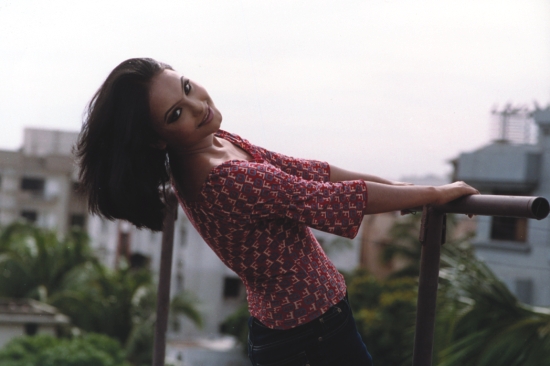
Dark skin is less vulnerable to skin disease as it contains more melanin
"Ninety percent of the brides are made-up so they look lighter skinned. Personally I don't think that's the way it should be but that's what's expected and we have to cater to that, otherwise I don't think people are going to come back to us."
But she believes that things have certainly changed a lot since the last decade and girls are quite comfortable with their original skin tone. "I greatly believe that you should try to improve yourself in every possible way but not necessarily with a lighter skin," she adds.
Shakil, who is a hot favourite for doing bridal make-up disagrees that the craze for a lighter-skinned bride is still as popular as it used to be. "I always concentrate on the eyes and lips of the bride. In fact I think a darker complexion is much more beautiful. I try to explain to my clients that their features will look much better when their skin is a little darker, but when they still don't understand I turn them a shade lighter," she says.
Talking about using fairness creams Shakil says that perhaps people use it in the same way they would use a sunscreen. "The only thing about using fairness lotions is that," Moyeen says, "people shouldn't have unrealistic expectations of it. You might become a shade or two lighter but not eight shades lighter as advertised."
Shakil adds that the quality of the skin is more important than the colour. "One should maintain a lot of things like a balanced diet, sufficient water intake and enough sleep. Many people ignore these important things and just focus on being fair-skinned."
She also strongly believes that a person's confidence and personality shows naturally on her appearance and that is the most important thing. "If there was one dark and intelligent girl sitting with another fair and dull person, anyone would naturally be drawn towards the confident and intelligent one," she says.
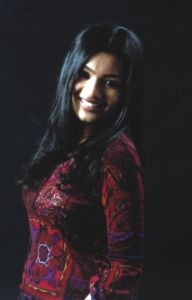 |
|
| People are more drawn to a confident person with a good personality, rather than a fair-skinned person |
Most women from the subcontinent are dark-skinned, a fact hardly portrayed in films or TV soaps |
Such progressive mindsets, however, are too few and far between in a culture where even now individuals are treated differently if they have lighter skin and where lighter-skinned children get preferential treatment from their parents. It is a daunting task to try and erase age-old notions of beauty that dictate that fair skin is superior to dark skin. But the media is largely to blame for the perpetuity of this unhealthy obsession. If advertisements showed dark-skinned women as successful and beautiful (which they very much are), if films had more dusky-skinned heroines instead of the white-washed actresses with cakes of foundation and if anchors, presenters and entertainers showed their true colour instead of hiding behind a uniform whiteness, the idea that brown can be just as beautiful as white will be more and more acceptable. Wanting to be lighter-skinned is not just a fad that can be equated with the Western craze to be tanned or blond. It has to do with a lack of self-esteem, an inferiority complex about being brown. It is high time we let go of our colonial past and accept our ethnicity, which includes the colour of our skin with respect. Bangladeshis are predominantly brown, that is what we are supposed to be. We should be proud it.
'Fair and Handsome'
If you thought that the obsession to be lighter-skinned was restricted to women only you couldn't be more wrong. Beauty salons for men are springing up offering a wide range of treatments, among them those that promise to lighten the skin. Thus it is not a strange thing to see men slathered with 'fair polish' or bleaching creams braving it out on the reclining chair in the hope of a fairer complexion. What's more, there's a new product in the market called 'Fair and Handsome' that promises to make a man a few shades lighter over several weeks of use. It seems the standard of 'tall, dark and handsome' doesn't conform to the South Asian ideal anymore.
Celebrities
on the Obsession to be Fair
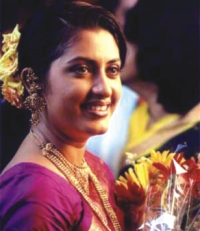 "What can be more fascinating and attractive about a person than his or her level of sophistication and intelligence?" asks Bipasha Hayat, famous actress, model and scriptwriter. According to Bipasha, a girl feeling deprived, insecure and ignored in society because of her skin colour is the sad truth in our country even today. "Product manufacturers are using this insecurity and this particular weakness of society and marketing their product," she says. "They are just playing on the age old fear where the society considers a woman with fair skin born successful as opposed to a dark skinned girl, who would probably never get a good husband or never get a good job." "What can be more fascinating and attractive about a person than his or her level of sophistication and intelligence?" asks Bipasha Hayat, famous actress, model and scriptwriter. According to Bipasha, a girl feeling deprived, insecure and ignored in society because of her skin colour is the sad truth in our country even today. "Product manufacturers are using this insecurity and this particular weakness of society and marketing their product," she says. "They are just playing on the age old fear where the society considers a woman with fair skin born successful as opposed to a dark skinned girl, who would probably never get a good husband or never get a good job."
The solution to this problem is for the society to change, no matter how slow the process. A former Lux model herself, Bipasha has also been part  of Lux ad films showcasing beauty and glamour. "I have done Lux ads, where the message was absolutely different," she explains. "Even today, Lux is associated to glamour and fame, irrespective of skin colour. The ads here tell the viewers that their favourite film stars and personalities perceive Lux as one of their daily basic necessities, which would basically have the viewers buy a bar of Lux just to be closer to her favourite personality." of Lux ad films showcasing beauty and glamour. "I have done Lux ads, where the message was absolutely different," she explains. "Even today, Lux is associated to glamour and fame, irrespective of skin colour. The ads here tell the viewers that their favourite film stars and personalities perceive Lux as one of their daily basic necessities, which would basically have the viewers buy a bar of Lux just to be closer to her favourite personality."
According to actor Aly Zaker, the CEO of Asiatic Marketing Communications Limited, every company has a responsibility towards the society to develop it rather than confirm its age old beliefs. "Even today the term 'fair' or 'phorsha' is synonymous to beautiful which is absolutely hilarious," he says. "And if there are companies and corporations who are supporting this idea in any way, then it is definitely despicable and there should be a campaign against it. Every corporation has Corporate and Social Responsibilities towards society which should be fulfilled."
The idea of being fair is the only way out is slowly changing amongst the youngsters.
The Roots of the Fairness Fetish
Dr. Rahnuma Ahmed a professor of Anthropology, Jahangir University tries to surmise the anthropological roots of the fairness fetish. "One thing that I should mention at the very beginning," says Ahmed, "is that early anthropology was much concerned with origins (often understood as evolutionary origins), but contemporary anthropology, feminist anthropology is more keen on unpacking the question at different levels. The idea that 'fair is lovely,' I think is easier to unpack if we phrase its opposite, namely that to be dark is considered ugly. Culturally-speaking, dark is malevolent, it is evil, oshubho, why, think of slogans raised on university campuses in Bangladesh by progressivist, even by left students: shoiracharir `kalo' haat bhenge dao, guriye dao. The skin color complex is historical, it is deep; it spans both city and village, where the majority lives, and it afflicts both men and women."
Many feminists, says Ahmed, will point out that generally-speaking, a preference for fair women is universal, that it has been known to exist in nearly every society, that this includes ancient India, Egypt, Crete and Japan; that fairness of skin is a yardstick of purity and innocence, that women should aspire to, should internalise it as part of their character development; that it can be seen in multitudinous art forms in both European and non-European cultures. "Thus in Bangladesh," says Ahmed "you will see fair (or pink-complexioned) women as heroines variously cast in roles of virtuous wife, virginal bride, loving mother or sister etc. on cinema billboards, in TV serials, as models, in rickshWa art etc. Women belonging to the pantheon of Bangali folk myths when visually represented are also fair-skinned. Colour discrimination is reinforced when one hears what is of course said grudgingly, kalo holeo ki hobe, meyeta dekhte shundor. Many feminists think that femininity and class have interacted to produce more-or-less universal ideas of fair as beautiful: that "fair" as a colour was considered beautiful because it meant your family was rich enough, you didn't need to work outside, to do manual labour, you could stay inside, that it was only peasants (chasha-bhusha) who worked out in the sun, and got dark. This was true for 20th century Europe, as well as for class-ed societies outside Europe, thus you will hear older women still urging their daughters and granddaughters to stay out of the sun. And this is also most common in Bangladesh, among all non-labouring classes."
Histories of colonisation of Bengal, of India as a whole, of South Asia even -- are probably significant as well, remarks Ahmed. "Thus, some historians and anthropologists speak of imperial concepts of 'outsiders' as fair-skinned, civilised and good, and 'natives' or indigenous peoples as dark, as exotic, uncivilised, dangerous, seeping into colonised cultures. Some mention that many of the gods that are portrayed as blue-skinned in Hindu religion were originally Dravidian, that the colonisers/Aryans spoke of the darker Dravidians as being ugly. I have come across one reference which states that making their gods blue was a way of coding the dark skin, in a manner that still made them acceptable as gods.
"And of course if one turns to more recent histories of colonisation of this region there are ample instances of how power relations between different races contributed towards the determination of fair as ideal: for earlier generations of Bangalis (in both Bengals), dekhte ekdom shahebder moto -- epitomised standards of beauty. And for later generations of Bangalis, this was toned down to dekhte ekdom Panjabider moto."
Copyright
(R) thedailystar.net 2006 |
